I start this podcast with a nod to a movie that I think qualifies as a work of integral art: Interstellar. It’s director Christopher Nolan’s latest film, a big-budget science fiction epic starring Matthew McConaughey, Anne Hathaway and Jessica Chastain.
Most science fiction is bound by scientific materialism, or scientism, the belief that, in integral terms, the seemingly interior aspects of reality are just expressions of the exterior aspects. In this view, consciousness is seen as a throw-off of the synaptic activity of the brain, free will is a delusion that gets us out of bed in the morning, and love is a mélange of chemicals and emotions that tricks us into mating and forming pair bonds.
This is the prevailing “religion” of modernism, taken on faith by most of academia, the media and the rising (and welcome) ranks of atheists. It is the philosophical basis for artificial intelligence and Ray Kurzweil’s singularity, which posits that sufficient material complexity will create consciousness. It is epitomized by the TV series Cosmos: A Spacetime Odyssey, created first by Carl Sagan in 1980 and reprised last year by Neil deGrasse Tyson, which we explored with Ken Wilber at the last Integral Living Room (you can listen to some of our discussions here).
 Integralists may be friendly to scientism, recognizing that it serves as a corrective to millennia of magic and myth where humanity was in the thrall of spirits, gods and God. But we also recognize that scientific materialism, like all religions, is itself limited by what it cannot or will not see: the domains of reality that feature novelty-out-of-nothing, enthusiasm, identity, mutuality and love.
Integralists may be friendly to scientism, recognizing that it serves as a corrective to millennia of magic and myth where humanity was in the thrall of spirits, gods and God. But we also recognize that scientific materialism, like all religions, is itself limited by what it cannot or will not see: the domains of reality that feature novelty-out-of-nothing, enthusiasm, identity, mutuality and love.
In other words, the dimensions of reality that are non-material but no less real than material reality. In this more integral view love is as real as a rock.
I believe that we are today witnessing the crescendo of scientism in our culture and the beginning of a serious challenge to its supremacy, a theme I feature often in my work.
Interstellar is an example of this trend. It is a story told from all four quadrants, where love is explicitly seen as force in the universe. As Anne Hathaway’s character Dr. Amelia Brand says in a voice Nolan clearly wants us to hear:
Love isn’t something we invented. It’s observable, powerful, it has to mean something… Love is the one thing we’re capable of perceiving that transcends dimensions of time and space.
David Brooks also writes appreciatively about Interstellar for the same reasons in his column, Love and Gravity, in the New York Times (11/20). As always, Brooks skates close to an integral understanding that love and intelligence are fundamental features of the universe and are present all the way down to the subatomic world.
But this isn’t an explicitly religious movie. “Interstellar” is important because amid all the culture wars between science and faith and science and the humanities, the movie illustrates the real symbiosis between these realms.
…in the era of quantum entanglement and relativity, everything looks emergent and interconnected. Life looks less like a machine and more like endlessly complex patterns of waves and particles. Vast social engineering projects look less promising, because of the complexity, but webs of loving and meaningful relationships can do amazing good.
As the poet Christian Wiman wrote in his masterpiece, “My Bright Abyss,” “If quantum entanglement is true, if related particles react in similar or opposite ways even when separated by tremendous distances, then it is obvious that the whole world is alive and communicating in ways we do not fully understand. And we are part of that life, part of that communication. …”
I suspect “Interstellar” will leave many people with a radical openness to strange truth just below and above the realm of the everyday. That makes it something of a cultural event.
ALL IS CALM, ALL IS BRIGHT
We just had a big winter storm here in Boulder, 24-hours of non-stop snow, which quieted the world by laying a thick white blanket over everything. My house and garden look like a Currier and Ives painting, calm and bright by day and sparkly with lights at night. The eaves are glistening with the kind of crystal clear icicles I used to suck on like popsicles as a kid. It is a scene that really evokes a holiday spirit.
And yet…I notice as I appreciate the beauty of the winter wonderland that I am simultaneously alarmed. Icicles mean my gutters and downspouts aren’t working right, which means my wooden eaves and soffits are in danger of rotting. And how can the slew of perennials I recently planted ever survive the ten-below-zero (-23C) temperature plunge? And, good god, seven feet of snow has fallen in Buffalo — what the heck is is going on with the climate?
This is the trouble with adult development: we know too damned much. And the more we know, the more we know about what’s going wrong.
As a result it’s hard to completely enjoy anything. This is, of course, an unavoidable hazard of growing up, whether as an individual longing for the uncomplicated joy she felt as a child, or as a society, which at every stage of cultural development mourns the loss of its simpler past. Now would be a good time to share a great artistic expression of this dilemma, via a performance from fifty years ago of a 22-year old soon-to-be superstar.
This longing for the experience of a more pure and simple time is heightened at the holidays, a time of year about which we postmodern people tend to be rather ambivalent. We resonate with the “peace on earth, goodwill to man” part (although we wish they’d change “man” to “all”), but we’re turned off by all the religious assertions put forth by the traditionalists. Further, we are appalled by the shop-till-you-drop materialism of the modernists. For many of us the holidays have become one more checklist, another skirmish in the culture war and an exhausting duty to be festive and giving.
One of the hallmarks of integral thinking is that evolution moves forward by differentiating and integrating. Atoms differentiate into elements and integrate to create molecules. Cells differentiate into muscle, liver, blood, etc. and integrate to become an organism. So it is with culture and consciousness. Ambivalence arises as a muddled mess of knowing too much, and differentiates into its component ideas and feelings, often polar opposites, which are then integrated into a bigger, wiser more flexible view.
As evolutionaries we notice that the holidays evoke a set of negative feelings that hold that religion and materialism are what’s wrong with the world; and they evoke a set of positive feelings that hold that love and generosity are what will save it.
Rather than have to figure out which one is right and which one is wrong, or to live in the approach/aversion ambivalence of one view polluting the other, we realize that the way forward is to see the truth of both views fully in a bigger, more flexible space of awareness that can accommodate contradiction and paradox. “Out of the dimness, opposite equals advance”, wrote Whitman.
The advance Whitman is talking about is into a new synthesis of the polarities, a new realization that takes into account the best of both views and acts accordingly.
So that’s the theory. Here’s the practice, at least the one I’m using to make the holidays make more sense to me this year. As always I want to be part of the fun of giving and receiving gifts, but I don’t want to just buy things for people. I want to enjoy the spirit of love and peace, but I don’t want to be blind to people and critters throughout the world who have neither.
So for many people on my shopping list, I am making a donation to an organization that is doing some good in the world.
Each gift is selected with the recipient in mind and given in his or her name. I’ll deliver it with a note of appreciation for their passion: for my animal loving friend, a donation goes to the amazing Wild Animal Sanctuary east of Denver. To my lefty friends, a gift to Amnesty International. It’s easy to buy for my friend Maria, who is a big supporter of Women for Women International, which empowers women in developing countries with education and loans.
There are endless choices, and some hazards to this process. Many “charities” provide little more than employment for their staffs. To guide me I turned to Consumer Reports, the well-respected, independent research lab, which sure enough has published a comparison of charity watchdog groups. In their article Make Sure Your Donation Counts they identified three organizations who they deemed worthy in evaluating charities:
The easiest way to research national charities is with the three major charity watchdogs: Charity Navigator, CharityWatch, and the BBB Wise Giving Alliance. They rate charities based on how they spend their money, protect donor privacy, govern themselves, and more. Some have tools to sort and search for organizations and reviews. They use somewhat different criteria and don’t always agree, so check out a charity with all three groups.
I’ve spent a couple hours on these sites and trust me, it’s way more fun, interesting and ultimately meaningful than the hours I normally spend this time of year on Amazon or at the mall.
The next step in my evolution? To sit and fully enjoy the beauty of my icicles while they are here. And when the weather breaks, clean out my gutters and spouts so I will never have to see them again!
****
I end the call — and this fall season of the Daily Evolver Live podcast — with a short recording of one of the great western spiritual masters of our time, the late Alan Watts. Like all realized teachers he is also a transmitter; he doesn’t just communicate ideas but he evokes a state of liberation and love in his listeners. So sit back, relax and let his transmission be the evocation of a beautiful holiday season for you and all the ones you love.
There’s much more on all of these topics on the podcast of course, which you can play below. The Daily Evolver Live restarts with the 2015 season on Tuesday night, January 6th. In the meantime I will be posting regularly here on the Daily Evolver.
Thank you for listening!
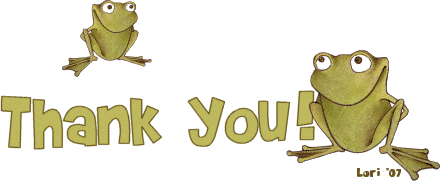
Podcast: Download
Subscribe: Google Podcasts | RSS

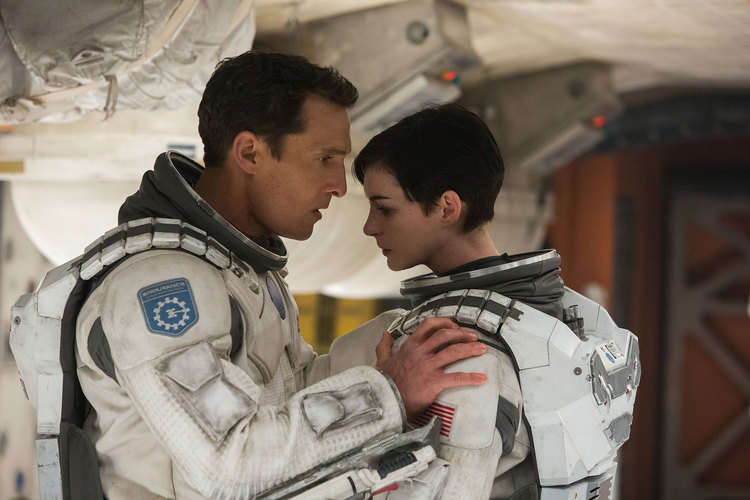
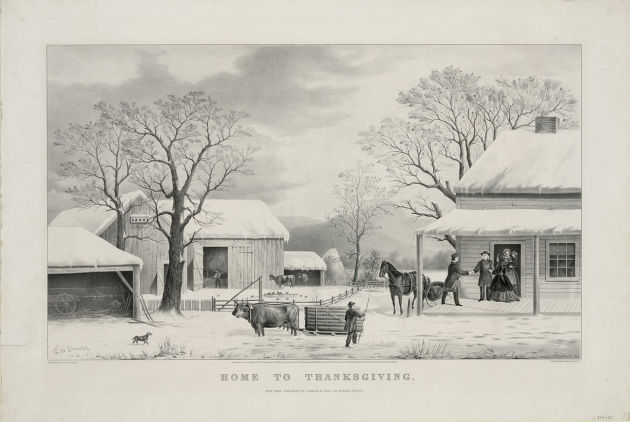
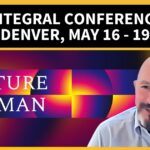

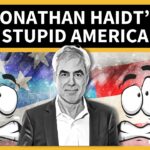

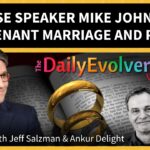
These are all great ways to make decisions about nonprofits one wishes to support. Please check out FindtoFund.com as well.
Hey Jeff
I feel envious at your description of the world outside your window – we never have snow here in Northland & Christmas just doesn’t feel right without it. I too am giving to good causes instead of the traditional gift buying option. We’ve done this as a family for quite some time after I couldn’t stand hearing my girls groaning about their Grandma’s taste any longer. (It was pretty bad.) It did help to focus on the situation of others and clarified in great detail how privileged we all are.
Also want to say thanks for the stories about your fish. I too have been hanging over the edge of my pond seeking signs of life and finally, one lonely fish appeared. I truly thought they were all gone but spurred on by your stories I’ve kept checking & am now in the process of getting some friends for my lonely but reliable mosquito larvae destroyer. Considering some of the subject matter discussed this is pretty tame but in some way life has now been made better. I feel optimistic and all is well.
Blessings
Imago
Thanks, Imago, so happy to hear your fish is getting a new school! Mine are having their long winter’s nap, but all together …
Dear Jeff,
This is one of my favorite Daily Evolver conversations. I haven’t been joining you the last few weeks but always listen soon as you post them. I saw the movie Intersteller and felt emotions swell as this powerful force of Love filled me up. its an amazing process when one day you wake up and realize this Love is present Now in every breath. What happened? Who is present now watching, listening, smelling, touching, sensing with this Love even when Mary Lindaness feels not so good, not so happy, or just some emotion has shown up asking to be reconciled …..maybe healed. Yet, this Big Love is ever present; like being in this vast field of light and greater Grace that hovers and attentively hugs with its Love over the little self struggling. Then this Love says I am here, forever, and never will I leave you. We are forever and you are safe and you can surrender all this small self karmic struggle, knowing Love, this force of Grace, will heal, protect and ever evolve you into greater and greater Oneness of Love…..how amazing this is our True Home within each of us….and then something else begins to happen. This love begins to show up first within me, then within you and then within all……This Love grows bigger and bigger to become a light body of reflecting itself into the Finite world where it grows itself in richer soils both within and without. We might slip in our own falling asleep to this Love but it never turns it Self off as always, already it has awakened and become aware of itself and Now it seeks its Infinite Love in all Finite life.
Thank you my dear friend for your Big Love and shining so brightly this Love through your Big conversations.
David Brook’s review of “Love and Gravity” gets something backward.
Brook writes:
But in the era of quantum entanglement and relativity, everything looks emergent and interconnected. Life looks less like a machine and more like endlessly complex patterns of waves and particles.
The implication seems to be that we notice the emergent and interconnected because of quantum entanglement and relativity. I suggest the opposite. To take relativity as an example, I propose that the physics of relativity was seen as a metaphor for philosophy of relativity and relatedness that was already in our awareness. People were attracted to the metaphor because they wanted feel their philosophy was grounded by some kind of science.
On a side note: Ken Wilber shares my long standing discomfort with what I see as a facile metaphorization of theoretical physics. A stronger integral stance is to see the metaphor for what it is (and isn’t) and then try to embrace the emergence and interconnectedness more directly.
I agree. The conflation of quantum physics and mysticism is mistaken. As you say the physics of relativity and the philosophy of relativity co-arose [in the lower-right and upper left quadrants, respectively]. Brooks never quite differentiates them properly. Nevertheless I’ll take mysticism confused with physics over no mysticism at all. It’s a stage on the path.
Thanks Jeff for this post! Both the Streisand and the Watts videos felt like gifts. I have watched the Watts video several times and shared it on my facebook. Enjoy your time away from the live calls – time for your other projects. I look forward to your posts and will look forward to the return of the Daily Evolver Live in January. Merry Christmas! I am so grateful for your work and your heart. Mary